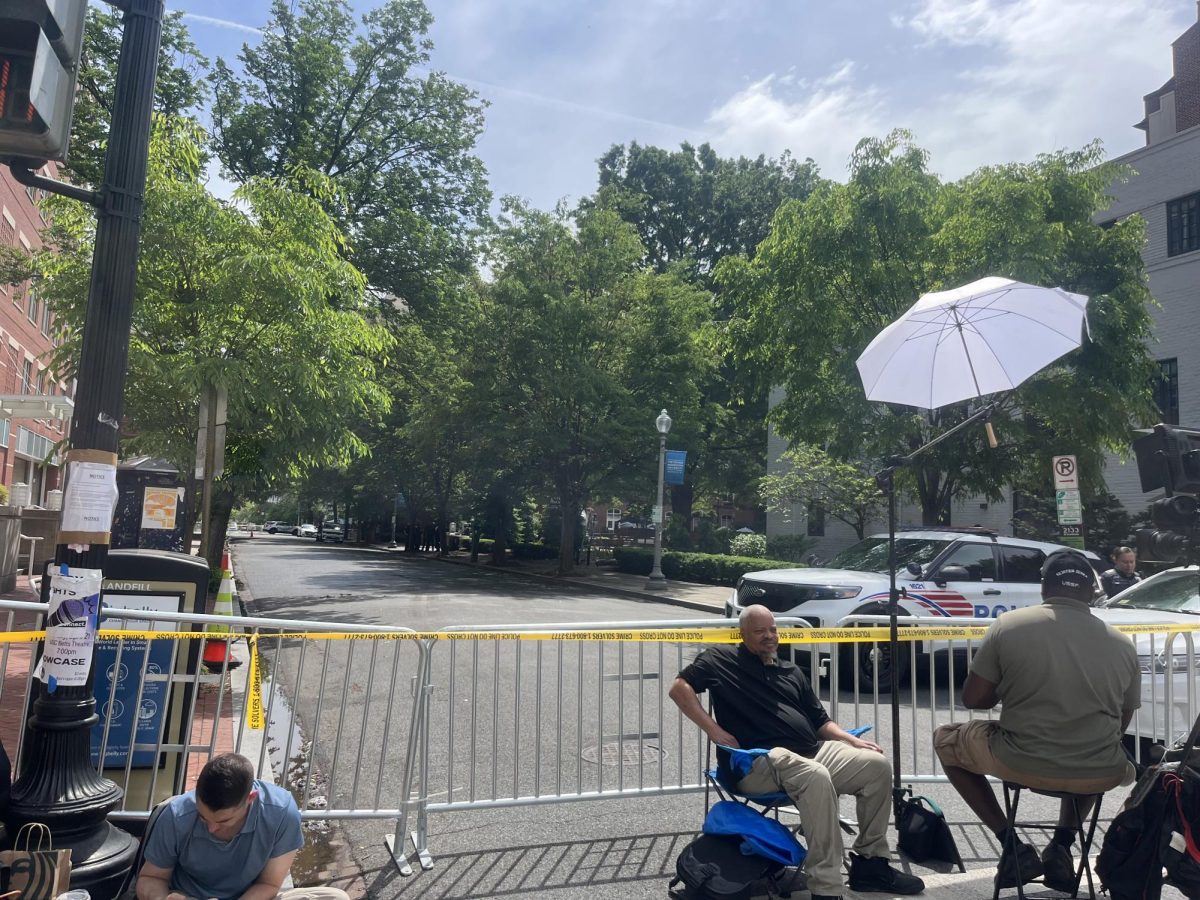From lemons to tear gas, from the quality of the school’s “grub” to the Vietnam war, from the early 1800s to 1999, Georgetown protests have taken on as many forms as they have taken on causes. This weekend’s 85-hour sit-in in the office of University President Leo J. O’Donovan, S.J. is the latest in a long and colorful history of Georgetown University student protests.
University archives contain an entry written by Robert Ray, a Georgetown student during “The Great Rebellion of 1850,” which the archives website called the “most celebrated” student rebellion prior to the Civil War.
Ray called it the “Ky Yi Yi Rebellion,” which occurred “on account of the quality of grub, mostly.” While the administration pursued the leaders of the rebellion, students “smash[ed] things up in general” and went to a Washington hotel where they presented their grievances to Senators and Representatives.
“That was the first rebellion I was ever in, the second was the one between the North and the South, and I must say that I came out worse for the wear in both of them,” Ray wrote.
The protest of 1850 is the first well-documented student protest in Georgetown’s archives. Since then, Georgetown has seen numerous student uprisings over issues such as apartheid, tuition, tenure and the Vietnam War.
War protests, and student protests in general, reached their pinnacle during the Vietnam era. University Archivist Jon Reynolds recalled first-hand a protest during the summer of 1971, a year when protests shut down the entire District. Reynolds said that a general sense of chaos was prevalent on campus.
He remembered one day when tear gas was lobbed onto the steps of Lauinger Library by authorities, either police or the National Guard, to quell crowds protesting the war. He also recalled that an unfortunate group of professors going to teach their classes were inadvertently hit by tear gas.
William McFadden, S.J., a theology professor, remembers the late 1960s and early 70s as “terrifying,” but emphasized that Georgetown students were not the only ones revolting on the campus and in the city. He said that students were coming to the area and onto the campus from all across the country.
The university administration did not encourage the use of Georgetown as a staging ground for national protestors. The Jan. 26, 1973 issue of The Hoya, describes a campus that was closed to anyone except Georgetown students and their invited guests. Parts of a university plan for “Counteracting Potential Campus Disruption” were implemented.
Five hundred student protestors were turned away at the entrances to the campus in one day, the article says, while others snuck in around the security with student help. ROTC cadets and guards patrolled the campus, randomly checking IDs.
McFadden also remembered a “particularly frightening” episode in Gaston Hall that same year. While the mayor of San Francisco, Joseph Alioto, was giving a speech in March 1969, students were giving him a “generally tough time.” Alioto was scheduled to address “the crucial issue of our time, college disorder.”
McFadden said that the lights were turned off and people were punched and attacked in the complete darkness, while the microphone was taken from Alioto. McFadden said that the third floor entrance to Gaston Hall was blocked with bodies in the chaos, but the crew team, which was providing security for the mayor, was able to escort Alioto to safety through the fire exit.
McFadden said that a “giant apology card” was signed outside of Healy and sent to the mayor to indicate that the students responsible for the chaos were not all Georgetown students.
A feature in The Hoya later that year was titled “Campus Violence: Part of Student Life.” McFadden recalled the late 1960s and early 1970s as a time when it was “the most ordinary thing in the world to have people blocking doors.”
The “lemonstration” of 1973 showed a more creative way to protest. Reynolds recalled the situation, when students were protesting tuition increases and other new policy changes that they viewed as “lemons.”
In a show of protest, the Student Academic Board sold 3,000 lemons to students, who placed them outside the office door of then University President R.J. Henle, S.J. The tuition increase to $2500 still passed, and the “lemonstration” failed.
More recently, in 1986, students protested Apartheid. McFadden recalled an occasion when students from the Student Coalition to End Apartheid constructed a shanty in front of White Gravenor as a symbolic expression of solidarity with blacks.
The construction of the shanty was viewed by former Dean of Student Affairs Jack DeGioia as a symbolic speech that presented the occasion for a likely escalation of violence. He ordered that the shanty be taken down, and when the students failed to remove it, he ordered the arrest of 35 students.
McFadden said the situation got “out of control” and the police were called, which resulted in a furor among faculty and students, who “thought that they should have a right to protest without fear of police on a college campus.” The university dropped both legal and disciplinary action against the students four months after the April arrests.
Nor was this past weekend the first time that the university president’s office was the site of a sit-in. In May 1971, a group of students were upset with President Henle’s response to calls for explanations of the police presence on campus during ay Day demonstrations. In this instance, the students left the office without an answer to find sanctions of disciplinary probation waiting.
James Walsh, S.J. called this weekend’s protest “refreshing.” He said that 30 years ago, the campus was filled with “Hell no, we won’t go” and now the campus rally-cry is “Whatever.” He said that it is “refreshing to see that now students can look past their careers and their long-term goals to think about others.”













